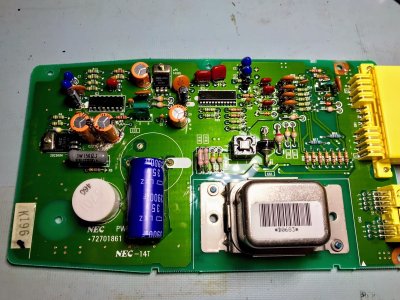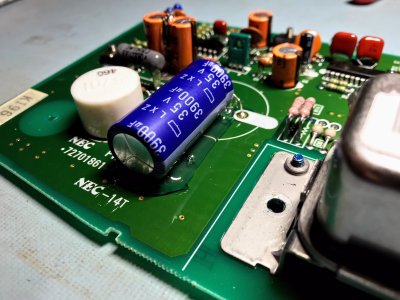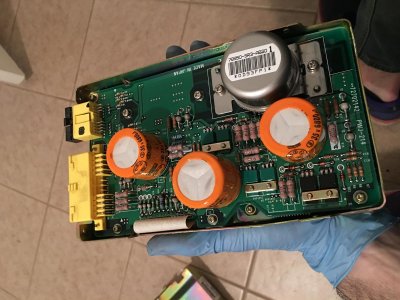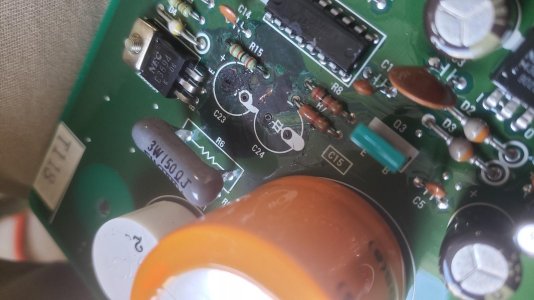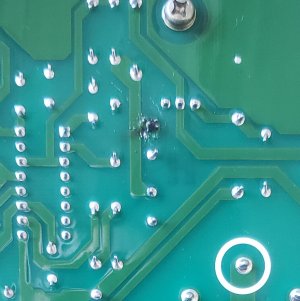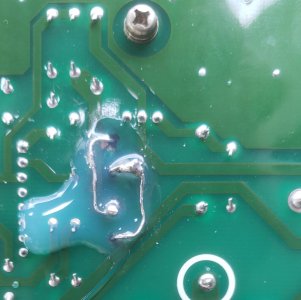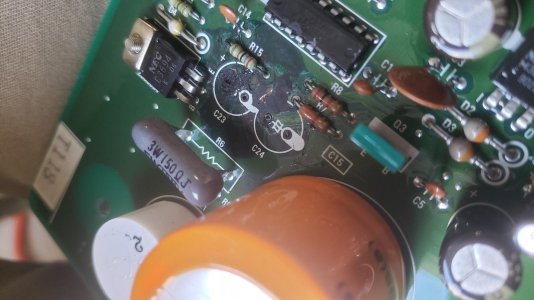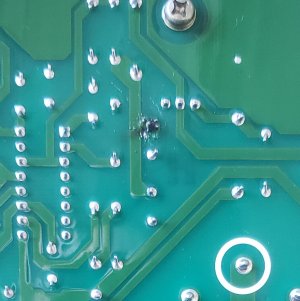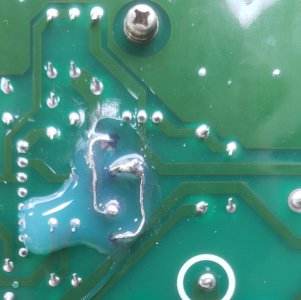Your observation about the epoxy seal on the large cap is interesting. A while back I stumbled across an MSc thesis paper on the web. The subject of the thesis was extending the life of electrolytic capacitors by sealing the base of the cap in potting compound. The author had observed that the common failure point was either ejection of or leaking around the rubber plug on the base of the capacitor. The author had observed that failure rates on equivalent potted electronic devices was lower than on non potted devices and theorized that the sealing of the capacitors was responsible for this. He sealed up a bunch of capacitors and subjected matching sets of sealed and un sealed caps to accelerated loss of life tests with the results supporting his theory.
An interesting paper. Unfortunately, sealing the base of all the electrolytics by potting them on to the surface of the board would pretty much preclude any future repairs if they were required.
Did you find a suitable replacement for the large cap or just re install the existing one?
An interesting paper. Unfortunately, sealing the base of all the electrolytics by potting them on to the surface of the board would pretty much preclude any future repairs if they were required.
Did you find a suitable replacement for the large cap or just re install the existing one?
Last edited:





